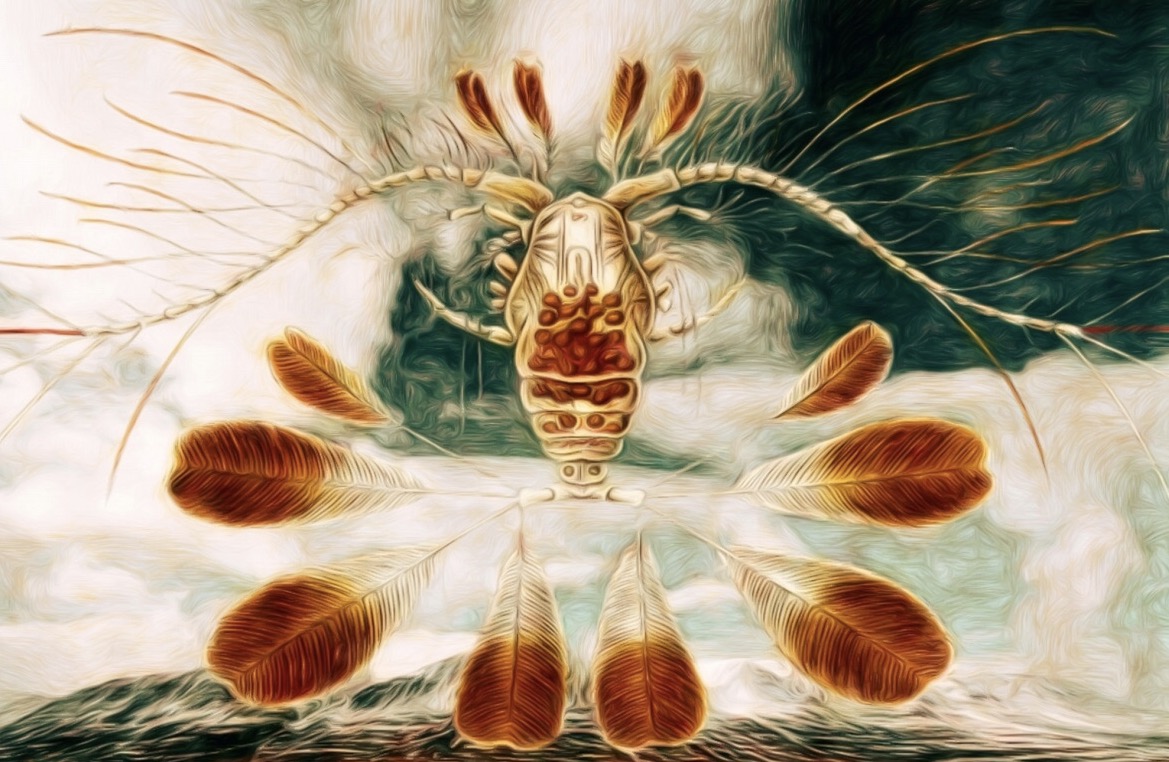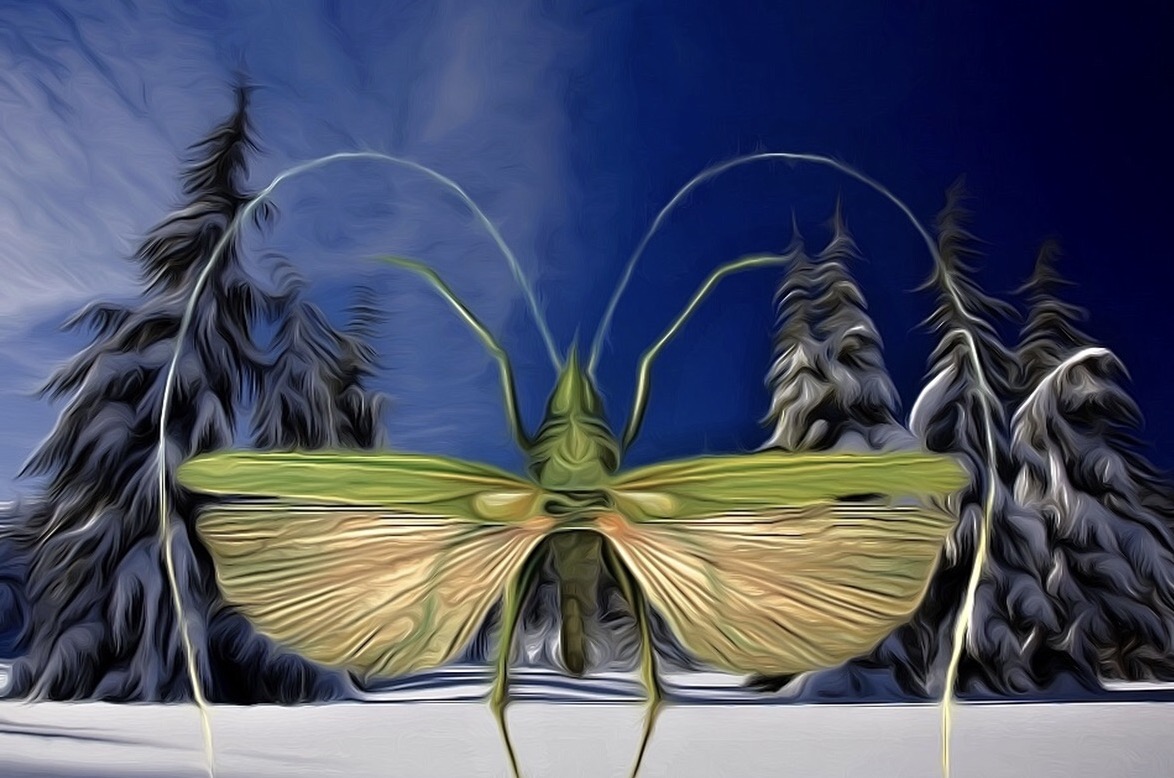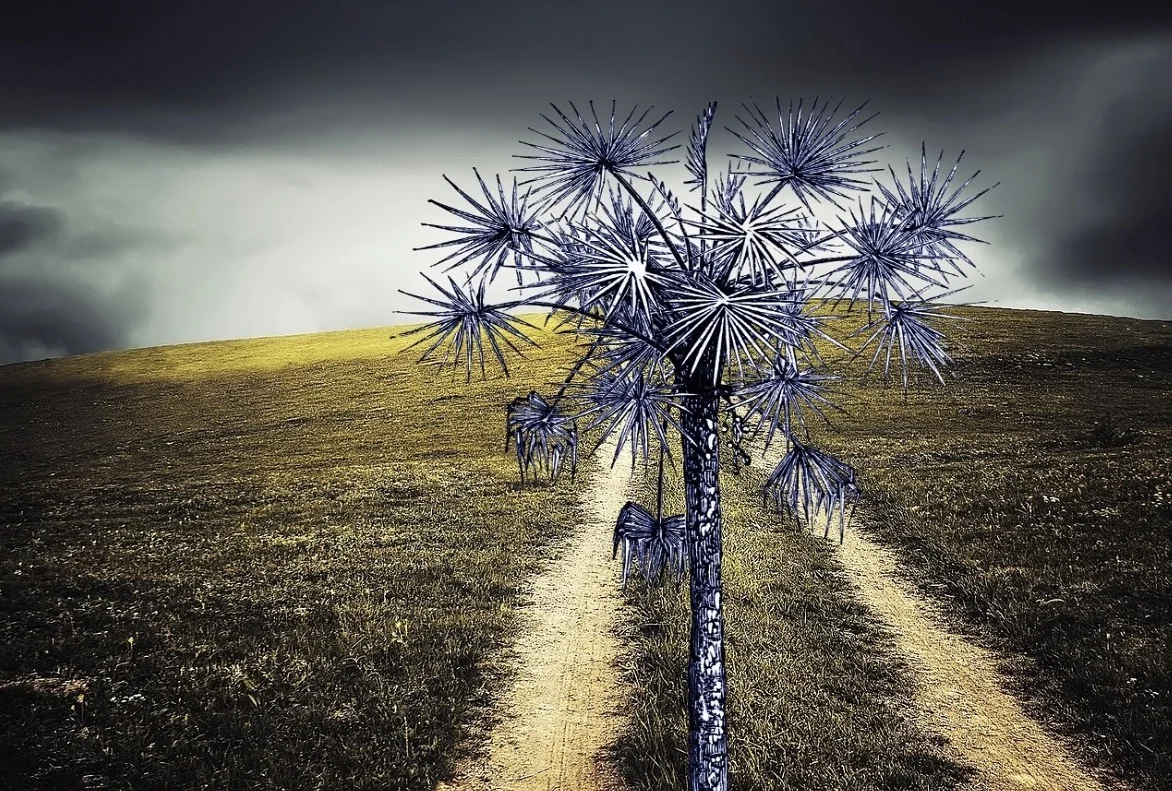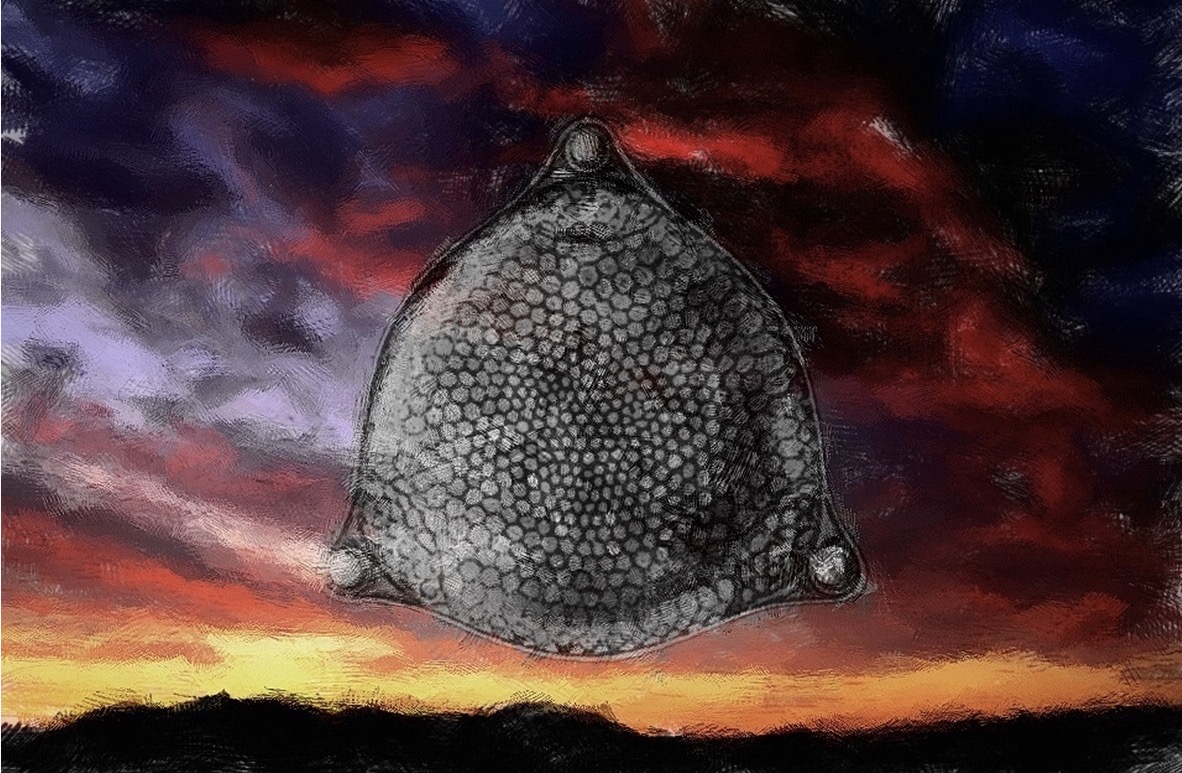Digital Earth
An Interview With Ashley Parker Owens
Ashley Parker Owens is a writer, poet, and artist living in Richmond, Kentucky. She has an MFA in Creative Writing from Eastern Kentucky University, and an MFA in Visual Arts from Rutgers University.
First, thank you for being a part of this magazine of literature and art. My first question is similar to one I have asked each artist: What does the term Appalachian Art mean to you?
I have struggled with the labels “Appalachian Artist” and “Appalachian Art” because the perception of what those phrases meant forty years ago. When I moved away from Kentucky to go to college decades ago, people made fun of me for being a hillbilly. I felt ashamed, but didn’t understand why. Over time, I’ve come to realize it is easy to bully those you think are less than you, but at the time, I felt defeated. I switched to writing because I thought my art was dismissed.
When I went to get my masters in Creative Writing, I faced some additional snottiness because I didn’t have a BA in English or writing. I was employed at the university as a assistive technologist (helping students with disabilities with their software and computer hardware) and was getting my education for free. Even in the South, I found myself an outsider. Humility is a useful trait for an artist or writer. I give away a lot of work for free, and I don’t place acceptance at one venue over another. It’s nice to get paid, but if I insisted on being paid, I would not be a successful as I am.
But anyway, back to the topic of what it means to be an Appalachian artist.
It isn’t a simple question to answer. Appalachia was defined in 1965 as a region of 420 counties and eight independent cities in thirteen states. This odd collection of locations is based on classifications of poverty, and forgive me if I don’t go into the specifics of the policies regarding this region. Besides the epic theme of poverty, Appalachian regions have an abundance of social issues like drug addiction and domestic violence, and regional issues related to labor, mining, environmental preservation, and conservation. Modern American art history describes artists of this region as untrained and creating art out of available materials, sometimes prettying up functional items. We’re talking wood carving, quilting, ceramics, crafts, furniture, artisanal food, homemade toys, and dolls. Keep in mind, many contemporary Appalachian artists and writers have advanced training in their disciplines, and do fine art rather than folk art, so the terminology is changing. When claiming this label, artists have been accused of appropriating the heritage for grants or other opportunities provided Appalachian residents because of economic need. Some themes that persist in Appalachian art and writing include a rural or mountainous setting, resourcefulness, reuse, and sometimes a Southern or country voice, which is not the same as hillbilly slang and a Southern accent. I’m a writer, too, and there are additional questions about what makes a writer Appalachian. It’s enough to drive you nuts. I live and work in Madison County, Kentucky, and this area has been my home for most of my life, so I feel at ease defining myself as an “Appalachian Artist and Writer.”
Let's take a moment to discuss the medium of digital painting. Can you explain the process and medium to give our reader a better understanding of what "digital painting" means?
In its most simple explanation, all the images I create are made on the computer and do not exist in physical form unless I print them out. I am making collages in digital form, using parts of images found in the public domain. I blend them in a program called ArtWeaver (a free program resembling Photoshop). After I create the image, I move it into a photo editing and developing program called Zoner Pro to further sculpt and change the scene.
You seem to have a love of Victorian images, plants, and bugs. What about these themes draw your interests? The images you place within the landscapes of your work almost consume part of the landscape: Is this an intentional decision and if so, what would you like for that composition to evoke in the viewer?
I love old Victorian illustrations and re-appropriate (steal and use) with glee. There are copious scientific illustrations from this time period. I create images that have a strong foreground/background dichotomy. This appeals to me in the same way that you place a character into an unlikely setting, providing a prompt for the mind to create any number of stories. Adding words or micro poems to images creates a complex jumping point for the imagination.
Is the foliage that you interject into the landscape native to that landscape?
Sometimes, but it is not intentional. I love vines and kudzu, but I also feel free to add odd creatures from the ocean or imaginary figures that might not have anything to do with Southern landscapes.
Your digital paintings evoke the spirit of a modern Georgia O'Keeffe for me: what visual artists do you gain inspiration from?
Concepts intrigue me more than visual art. I got my master’s degree in art at Rutgers in the mid-eighties, so post-modernist ideas and notions of re-appropriation have carved a notch in my psyche. I am drawn to emotionally charged images I’ve seen in films. For instance, movies like The Tree of Life and other Terrence Malick films, as well as sci-fi classics like Eternal Sunshine of the Spotless Mind and Blade Runner.
You also have words/poems that often accompany your visual work: What tends to come first, the words or the images?
They are always done separately, and then I mix and match what makes sense. I’m always making lists of words that have caught my attention. The process of braiding words, foreground and background is entirely subconscious, meaning there is no logical match I could defend. I just play a lot and see what sticks. I write a similar way. I often make a list of words that I want to use, and then write the story, and go back and add words from the list.
Lastly, I am always interested in knowing, if you could work in any other medium other than words and digital painting, what would that be?
I can’t answer this question because there are a lot of areas of expression, and most require space and spending money on materials. When I was an art student, I did a little bit of everything. I really enjoy working with my hands to mold clay or build in wood. I also like to paint, but I am not very good at it so I stick to digital media, which can be easily erased or modified.
I have plans to create video computer games when I retire. (I work in tech for my day job.) I have an idea in mind. My favorite video game is Esther, which is not a computer game in a traditional sense. It is an adventure where you traverse an island and learn about the people that lived there that are now all gone. At the end of the ‘game,’ you feel like you have experienced several lifetimes and have gained knowledge of the mysteries of life. The kind of game I want to make has multiple characters and scenarios that provide a story accessed by a rich visual environment. I don’t know if I will ever actually do this, but I think about it a lot.
Find more images at:
https://www.zonerama.com/ashleyparkerowens/61449
https://www.virtualgallery.com/galleries/ashley_parker_owens_a43845277/landscapes_s16464
https://www.facebook.com/ashleyparkerowens/?ref=aymt_homepage_panel







